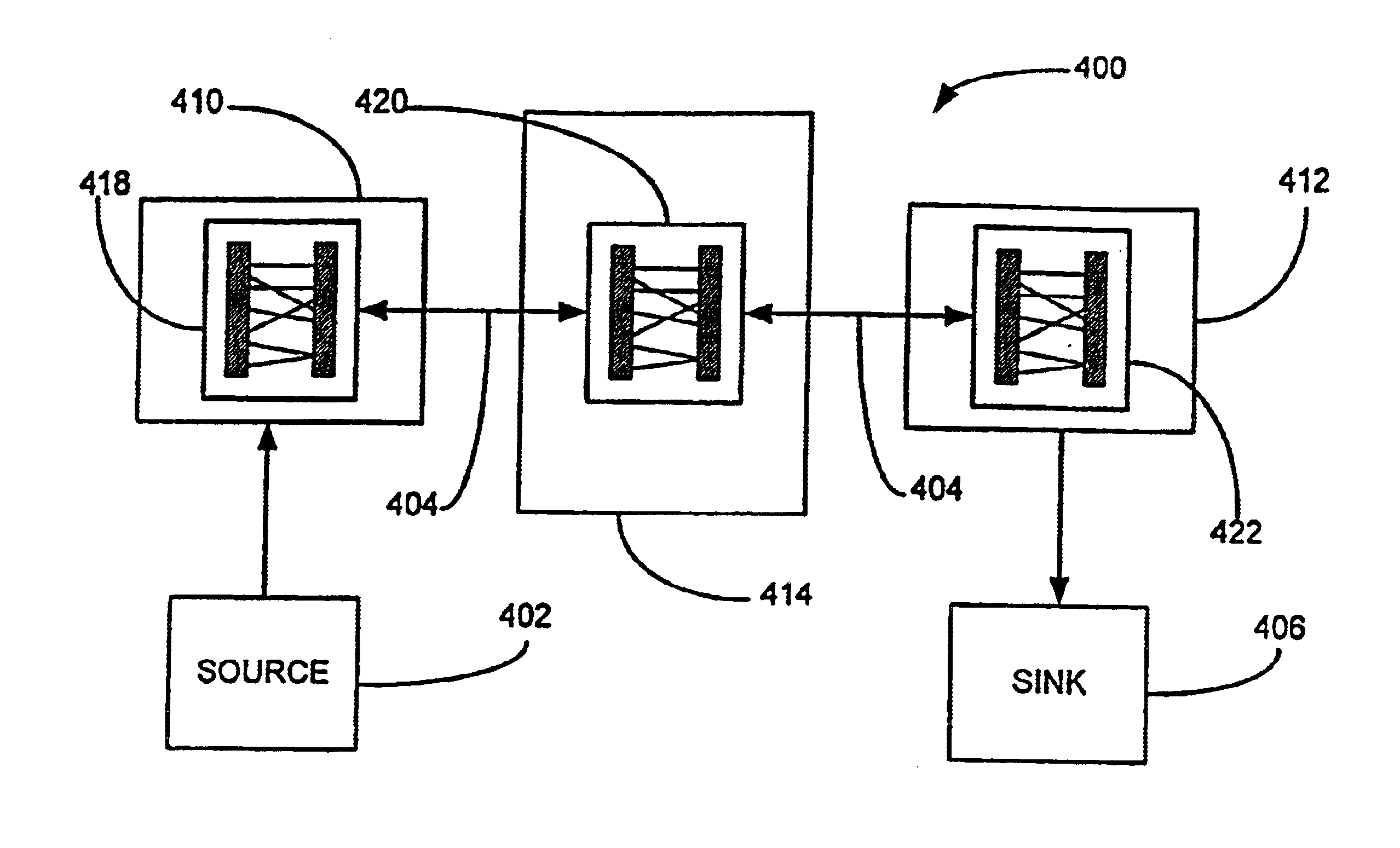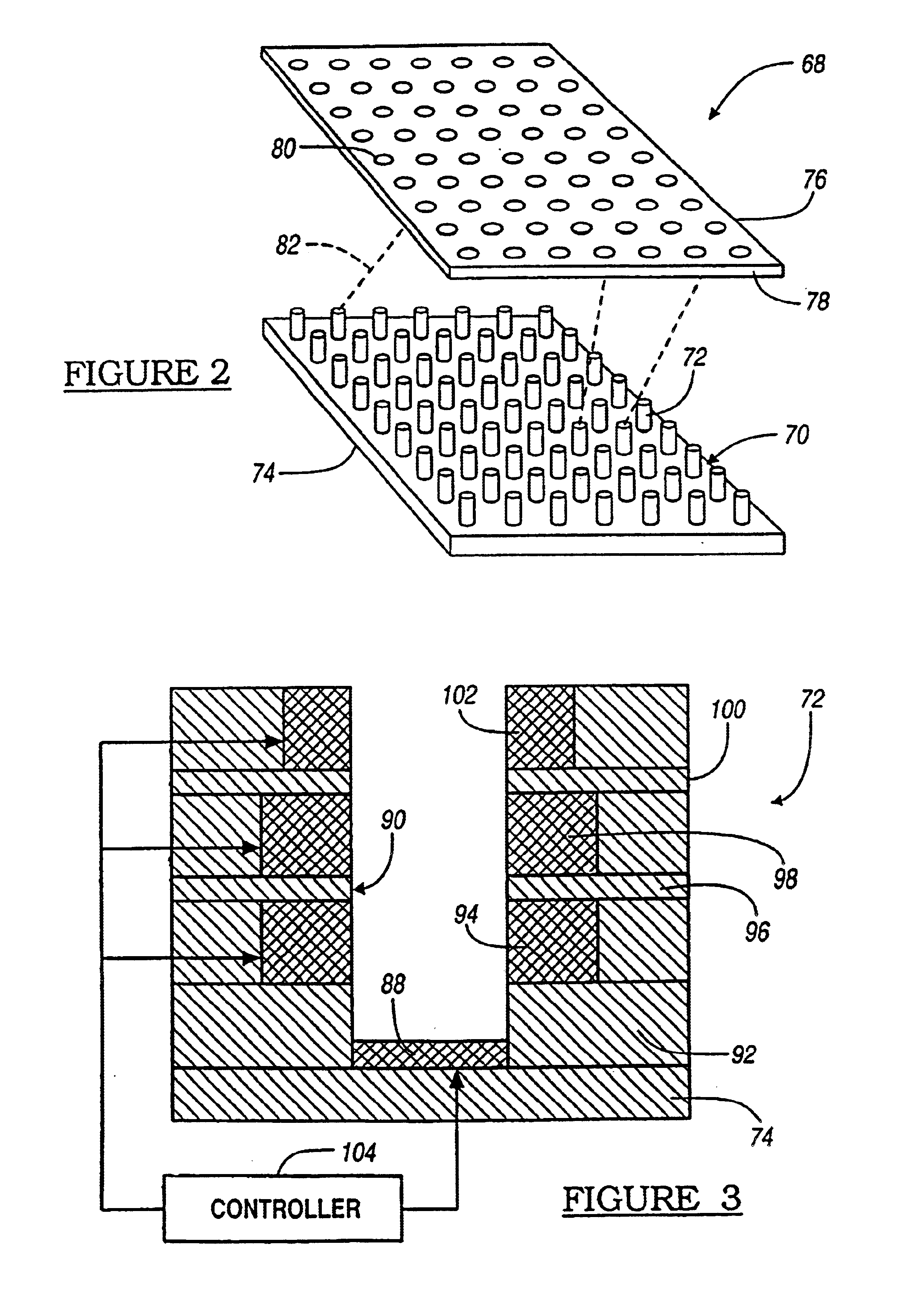Use of a free space electron switch in a telecommunications network
a free space electron switch and telecommunications network technology, applied in the field of electron switch, can solve the problems of reducing the optical signal strength, reducing the detection efficiency of optical signals over background noise, and requiring the receiver to provide suitable photon switching devices to redirect optical signals,
- Summary
- Abstract
- Description
- Claims
- Application Information
AI Technical Summary
Benefits of technology
Problems solved by technology
Method used
Image
Examples
Embodiment Construction
The following discussion of the embodiments of the invention directed to a free space electron switch used in conjunction with various telecommunication systems is merely exemplary in nature, and is in no way intended to limit the invention or its applications or uses.
FIG. 1 is a block diagram of a telecommunications system 10 employing a free space electron switch 12, according to the invention. The switch 12 is responsive to a plurality of optical signals and RF signals on input lines 14 in connection with various communications channels 16. Only a few of the channels are shown, but, as would be appreciated by those skilled in the art, a practical switch of the type discussed herein would have thousands of input channels. As will be discussed in detail below, the switch 12 directs or switches the signals on the various input lines 14 to one or more of a plurality of output lines 18 in connection with various communications channels 20 at the output of the switch 12. The electron s...
PUM
 Login to View More
Login to View More Abstract
Description
Claims
Application Information
 Login to View More
Login to View More - R&D
- Intellectual Property
- Life Sciences
- Materials
- Tech Scout
- Unparalleled Data Quality
- Higher Quality Content
- 60% Fewer Hallucinations
Browse by: Latest US Patents, China's latest patents, Technical Efficacy Thesaurus, Application Domain, Technology Topic, Popular Technical Reports.
© 2025 PatSnap. All rights reserved.Legal|Privacy policy|Modern Slavery Act Transparency Statement|Sitemap|About US| Contact US: help@patsnap.com



